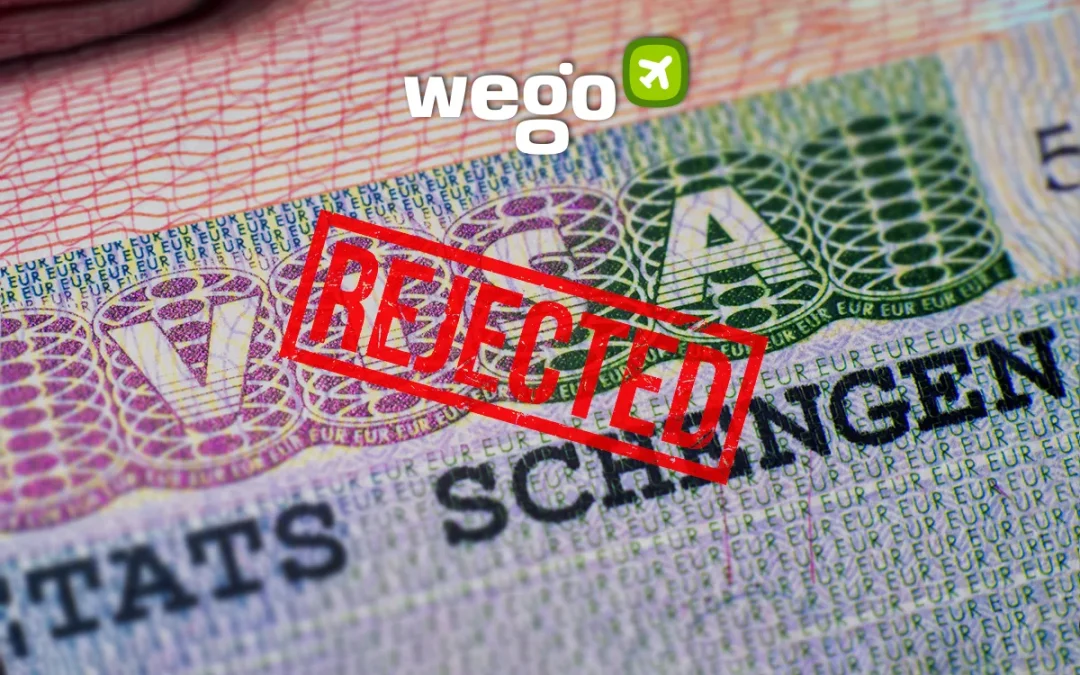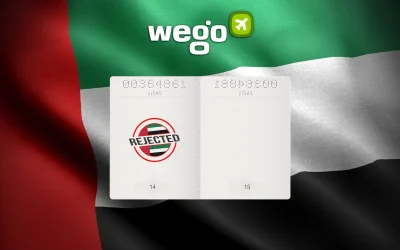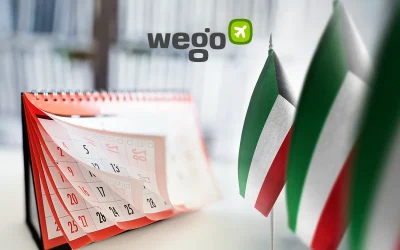This article is reviewed regularly by Wego’s editorial team to ensure that the content is up to date & accurate.
Reviewed March 2024
If you want to visit Europe, getting a Schengen visa rejection can feel like a huge setback. You may have spent a lot of time and effort on your application but still get denied for various reasons. Some common causes of Schengen visa rejection are missing or incorrect documents, insufficient money to cover your trip, or a lack of travel purpose.
Wego has broken down the reason why your Schengen visa application may have been rejected and what steps you can take to improve your chances next time. Keep reading to learn more!
Table of Contents
Schengen visa rejection rates
According to the latest data available, Schengen Visa Statistics for 2022, below are the rejection rates for visa applications in each of the Schengen countries:
Schengen countries with high rejection rates:
- Malta rejected 36.4% of visa application
- Sweden rejected 29% of visa applications
- Belgium rejected 28.4% of visa applications
- France rejected 22.2% of visa applications
- Norway rejected 20.3% of visa applications
Schengen countries with low rejection rates:
- Italy rejected 12.7% of visa application
- Greece rejected 12.5% of visa application
- Switzerland rejected 12% of visa application
- Poland rejected 11.6% of visa application
- Luxembourg rejected 10.5% of visa application
- Finland rejected 9.7% of visa application
- Slovakia rejected 9.7% of visa application
- Latvia rejected 9.5% of visa application
- Lithuania rejected 7.8% of visa application
- Iceland rejected 1.9% of visa application
Schengen visa rejection reasons
When your Schengen visa application is rejected, it means that the embassy or consulate of the Schengen country you applied to has reviewed your application and accompanying documentation and has determined that you do not meet the requirements for obtaining a Schengen visa. There are various reasons why a Schengen visa application may be rejected, as listed below.
Failing to provide the correct paperwork
To avoid the risk of Schengen visa rejection, having all the necessary documents in order before filling out your application is crucial. Even a minor mistake, such as providing visa photos that do not meet the minimum requirements, can lead to your application being refused.
It is worth noting that different Schengen countries may request different documents, so collecting the correct ones for the country you wish to visit is essential. To ensure that you have all the required documents, many Schengen countries provide a document checklist that you can follow.
The data in your visa application does not match the travel documents that you provided
While it may seem like common sense, it’s important to ensure that the information you provide on your Schengen visa application form matches the information on your travel document. Failure to do so can result in your application being rejected.
Before submitting your application, be sure to carefully check that your name, surname, passport number, and other information align with your travel document. Taking the time to double-check your application can save you the hassle of having to restart the process.
Delaying the start of your visa application
Late applications often result in visa refusals, as processing times vary depending on the country and peak travel seasons. Processing times can range from 15 to 30 days, and other factors can contribute to delays. It’s generally advised to begin the application process at least 30-45 days before your trip, as many countries allow for applications to begin up to 90 days in advance. Starting early provides a buffer for unforeseen delays and increases the likelihood of a successful application.
You don’t have sufficient funds.
Proving your financial capability to support yourself during your trip is a requirement for the Schengen visa application. This can be demonstrated through the submission of financial documents such as bank statements, pay-slips, credit card statements, and financial statements spanning three months or more.
Failure to provide these documents or meet financial requirements may result in a visa rejection by the Consulate official. Financial requirements vary between Schengen Area countries, and it’s important to be aware of the minimum financial requirements of the specific country you intend to visit.
Your passport is invalid or damaged.
As part of the visa requirements for a Schengen visa, your passport must be valid for at least three months. Failing to meet this requirement will result in a visa denial. Before applying for the visa, make sure your passport is not nearing expiration, as this will require applying for a new valid passport.
Additionally, presenting a damaged passport can also lead to application rejection by the Consulate official. Examples of a damaged passport include missing or detached pages, a damaged cover, and insufficient blank pages. It’s crucial to always have a valid and undamaged passport, which is the most essential travel document for all visa applications.
You have a false document on your visa application.
If you attempt to submit fraudulent documents, your visa application will likely be rejected, and you may face additional negative repercussions. To avoid these issues, it is essential to collect all necessary documents and verify that they are authentic and meet the required criteria before submitting them. This will save you time and increase your chances of a successful visa application.
What to do after my Schengen visa got rejected?
There are two options that you can take after you get your application rejected, you can either re-apply for your Schengen visa or propose an appeal to the Embassy or Consulate of the country that you are applying for.
If you decide to re-apply for your Schengen visa application
Correct the mistakes you’ve made in your first application or improve your situation
It’s crucial to learn from your mistakes and not let a rejection lower your chances of approval in the future. While visa officers may take note of your previous denial, Embassies and Consulates are reasonable and understand that mistakes happen. By addressing any issues with your initial application and improving your situation, you can confidently re-apply and have a good chance of success. So, don’t be discouraged by rejection and use it as an opportunity to improve your application.
Wait for 30 days until you re-apply for your Schengen visa
In case your Schengen visa application is rejected, you may wonder what to do next. The good news is that you can re-apply for a visa. However, having two visa applications in process simultaneously is impossible. Therefore, it is recommended that you wait for at least one to two months before submitting a new Schengen visa application.
Don’t use the same documents (excluding birth certificate, passport, etc.)
Let’s say you submitted your visa application in June and received a rejection in July. It may take you until August to figure out why you were denied and what documents were lacking in order to make the necessary revisions.
Consequently, resubmitting the same documents would not be appropriate, particularly since some may have already been flagged as unacceptable. Instead, when submitting a new application, you should include up-to-date photos, utility bills, bank statements, and other required documents.
Note: make sure to also submit documents that can showcase the purpose of your trip, like – an itinerary, return flight tickets, letter of invitation from family or friends, and proof of accommodation.
If you decide to apply for an appeal
While it is usually possible to re-apply for a Schengen visa right after being denied, it is generally advisable to wait for about a month.
However, instead of reapplying, you can opt to go through an appeal process: the visa officers can review your previous application, identify any incorrect or missing documents, and give you an opportunity to update your application.
How to write an appeal letter
An applicant may write an appeal letter citing valid reasons for unjustified rejection. The letter should include facts or a legal basis supporting the argument, and sometimes additional evidence can be submitted to prove the rejection was incorrect. Below is the structure of your appeal letter for your visa:
- Personal details: the letter must contain details about the person writing it, such as their name and surname, date and place of birth, passport number, as well as their current address. You are strongly advised to also put your email address and phone number in the letter.
- The date when your application was rejected: take care to mention at the very beginning when you received the rejection letter on your application.
- The reason behind your visa refusal: mention clearly, as stated in the rejection letter you received, why you were not granted the visa.
- Why you believe the rejection was incorrect: explain why you think your application was wrongly rejected and why they should approve it. List the reasons, if more than one, why you believe the decision on the denial of your application must be overturned. This is the most important part of the letter, so pay close attention to it.
- Your signature: after you write your letter, print it and sign it at the end. Letters submitted without signature will be turned down.
Note: Make sure to gather all the missing documents before submitting an appeal letter.
You also must attach the supporting documents along with your appeal letter, depending on why your application was rejected. To submit the appeal, you can present your appeal letter for a Schengen country’s visa at either their embassy or the embassy/consulate designated for visa processing.
However, the organization responsible for deciding on your visa appeal will vary depending on the country that denied your visa. For example, the Administrative Court in Berlin will review your visa refusal appeal in Germany. In Italy, the Administrative Regional Tribunal is responsible; in Norway, the Directorate of Immigration; and in France, the Ministry of Foreign Affairs, and so on.
After submitting your appeal letter and accompanying documents, the appropriate appeal processing organization for that country will review your letter. A higher-level officer, who is responsible for handling Schengen visa appeals, will make a decision on whether or not to overturn the decision to reject your visa application.
The waiting time for an appeal letter varies depending on the embassy of the country you applied to. In some cases, if your appeal is also rejected, they may not inform you of the decision made on your application.













